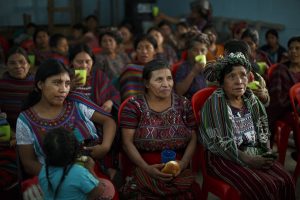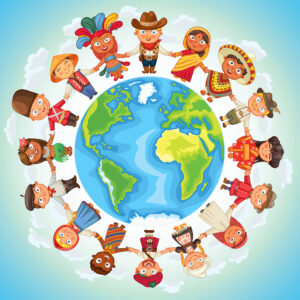Culture can be seen as a setting in which we grow and learn. Through our participation in daily activities, customs, and rituals with social others, we share, live, perform, and experience culture. Our actions, beliefs, and feelings are influenced by culture, which also helps us make sense of our social environments. For instance, culture has an impact on how we feel, create our self-concepts, learn, and solve problems.
Many children in the US and around the world now attend school in formal settings as a result of rising migration and human movement in the twenty-first century, where cultural norms and practices at home may conflict with those that kids meet at school.
Children are forced to traverse the two separate social worlds of home and school as a result of this experience. What role does culture have in influencing children’s school experiences and academic success is one broad question we can investigate. Let’s focus on three key areas: teacher perspectives, school curricula, and kids’ learning. The first two concern parental attitudes and socialization methods.
Sponsered5
Socialization techniques and parental attitudes
Children’s academic experiences are influenced by parental expectations, convictions, and attitudes regarding education. Many parents in various cultural groupings see education as the key to prosperity in the future. For instance, many Asian and Asian American youngsters succeed academically as a group. What part does culture play in determining these results? Chang observes that parents in Taiwan and China generally place a high emphasis on education. Kim and Park observe that Korean parents also experience this. These tribes’ parenting styles place a strong emphasis on teaching and correcting kids, as well as on parents’ selflessness and love for their offspring. Parents teach their children to persevere and work hard, and socializing techniques reinforce these virtues.
These cultural customs aid kids in internalizing the importance that their parents place on education and adhering to social norms. These qualities are instilled in children, who also show their parents loyalty, appreciation, and dedication in return for their help and encouragement. They work hard in school in part to please their parents and the larger social circles to which they belong.
Teacher perceptions
Additionally, teachers are crucial to the academic performance of kids. What strategies encourage kids to perform well in school the best? The solution is based on a number of variables. For instance, a lot of teachers will be tasked with instructing kids who might not be from the same culture as them. What potential effects can this cultural mismatch have on children’s schooling and chances for academic success?
Sponsered5
The majority of educational techniques in America follow prevailing, mainstream American conventions, attitudes, and behavioral scripts. The majority of European American youngsters, who value freedom and individuality, can be strongly motivated by teacher praise and awards. Receiving praise in front of classmates, however, could be awkward for kids whose families place a high priority on modesty and humility.
Norms for student engagement are another illustration. Many American educators who adopt a mainstream cultural perspective link attentiveness and active student engagement. Yamamoto and Lino noted that knowing when to be silent is a desirable talent that parents socialize their kids to develop for many Asian and Asian American pupils. Teachers who adhere to mainstream American cultural norms and beliefs may mistakenly believe that silent students are uninterested and inattentive. Children’s drive to learn and academic success are impacted by these perceptions.
School curricula and children’s learning
Curriculum and instructional strategies frequently reflect dominant, mainstream American values. Instead of emphasizing group or collaborative problem-solving techniques, many American schools encourage individual learning and problem-solving methods. Individualized learning is emphasized because it aligns with the cultural ideals of independence and individualism. These methods advocate for the self as distinct from social others. Many European American kids engage in cultural customs and rituals that support this outlook and set of principles.
Sponsered5
However, a lot of Latinx and indigenous kids engage in family rituals and extracurricular pursuits that emphasize cooperative and group problem-solving. These customs relate to the cultural ideologies of interdependence and collectivism. Children engage in routines and activities at home that highlight the value of the group, particularly the family. Thus, there is a gap between the approaches at home with the practices and routines the child encounters at school. As a result, many of these kids frequently struggle to attain their full potential in classes that value individual problem-solving abilities. Why does this occur, and is this the only possible outcome?
The cultural behaviors that a child engages in at home and the ones they are exposed to at school may conflict for many children from cultural backgrounds that emphasize collectivism and an interdependent cultural model of the self. Teachers frequently are ignorant of these sources of conflict. The student’s achievement or the child’s cultural legacy should not be compromised by this tension between the child’s family and school, though. Meeting pupils halfway and bridging the gap between the two environments is one way that schools may help.
The Bridging Cultures Project, which helps Native American and Immigrant children in the US, and the Kamehameha Early Education Program (KEEP), which helps native Hawaiian children, are two excellent examples. Both initiatives emphasize how assisting teachers in being more conscious of, respectful of, tolerant of, and inclusive of all of their kids’ cultural beliefs and goals affects how motivated and academically successful children are in school.
Sponsered5
Final thoughts
The educational experiences and academic success of children are influenced by a variety of cultural factors. These include the worldviews of the parents, socialization techniques, and cultural customs. Children’s experiences in formal education are shaped and connected by cultural beliefs, practices, and home learning methods. Educational programs like The Bridging Cultures Project and KEEP emphasize the significance of cultural kinship and compatibility in encouraging kids’ active participation in school. One crucial step in ensuring the academic success of all students is to acknowledge and take into account their cultural knowledge, learning styles, and patterns when they diverge from those in the classroom.
Sponsered5



